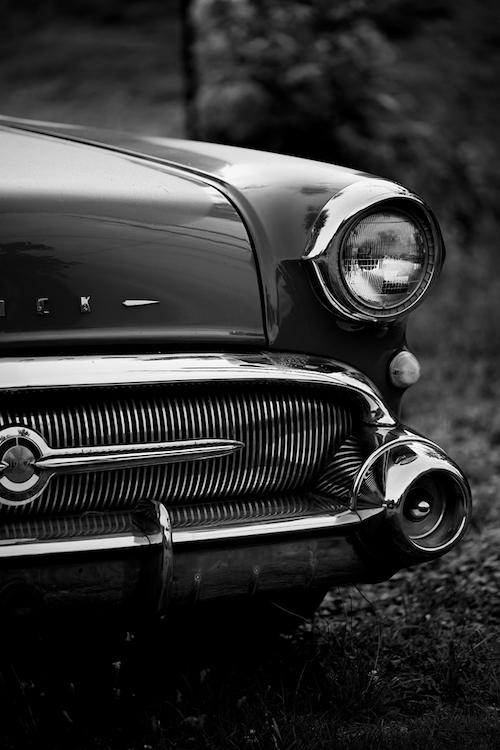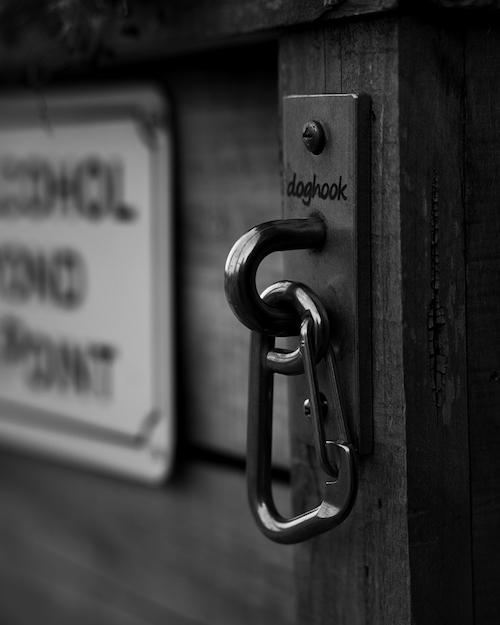Spotlight: Tony Shepherd's Extraordinary Views of the Ordinary

-
Most of us head out the door with an idea of discovering and bringing home visions of places and things that go beyond the realm of the ordinary. We seek out landscapes and scenes that impart an inherent and obvious and unique drama. Photographer Tony Shepherd, on the other hand, uses his camera and his creative energy to reveal the extraordinary beauty of the commonplace like park benches, a curled length of barbed wire or even a pair of old sneakers hanging from a telephone wire.
Shepherd, you might say, is obsessed by the world that most of overlook a thousand times a day. He uses his visual skills (and his willingness to kneel, lay flat or climb in search of fresh viewpoints) and his seemingly boundless creative enthusiasm to champion those everyday objects. And here’s a simple truth: once you’ve seen his work, you’ll never think of ordinary as ordinary ever again.
Shepherd recently took a break from his photo-seeking adventures to talk with writer Jeff Wignall about his curious obsession with the humdrum, how he came to this particular offbeat passion and his love of Tamron lenses. If you’re every bored with the photo possibilities found in your own backyard, read on—you’ll almost certainly be grateful for the creative heads up.
PPD: How and when did photography come into your life?
TS: I grew up with an appreciation for photography after getting a disc film camera back in the 90s when I was a kid. It might have been one of my uncles that got it for me, I can’t remember, but it was the start of my experimenting with photography. At various periods in my life photography would resurface in the form of cameras ranging from a Sony point-and-shoot camera to the phone cameras on the Blackberry, Android, and eventually my iPhone. With a background in music production, I was always around great photographers who were taking photos of artists, but it wasn’t until 2020 that I began to pick up a professional camera myself and begin serious photographic work.
PPD: You describe your work as photography that “celebrates the dignity and beauty of the mundane.” What is it that drew you to ordinary objects as your creative muse?
TS: The world is full of amazingly mundane things that easily get overlooked. But I think we all instinctively resonate with this idea of the “little guy” that gets overlooked and we all crave a story where the underdog finally has their comeuppance. We all have special things, special objects, in our lives that mean a great deal to us, but others may look at those same simple things and all they see is something very ordinary. Art and film tell the grandest stories when they explore the plot twist, when the least likely turns out to be greater than you imagined.
Maybe I’m a bit of a philosopher, but I’m intrigued by photographs that tell the story of greatness smuggled into the ordinary, beauty shining through the mundane and greatness clothed in the ordinary. In a way, I'm telling a story we all can relate to. At a practical level, its great inspiration to photographers to know that they can take great pictures of ordinary things—and without traveling to an amazing place.
PPD: Have such simple subjects always been your primary focus?
TS: I have not always focused exclusively on simple subjects. I have also spent time taking “contextual” photos, focusing on the greatness of the whole picture—big city shots in New York, Washington DC, Philadelphia, for example. Photography is a way of documenting life, and so we encounter subjects that are self-evidently great whether common and ordinary or not. I will take advantage of any opportunity to capture great things in front of my lens, but I will always have a place in my art and in my heart for the mundane.
PPD: Do you go out in search for mundane or ordinary objects to shoot, or do you let them call to you?
TS: I have a few friends that I go on photo walks with and we have affectionately nicknamed mundane objects “Pixbyshep!” just to punctuate the fun you can have going out specifically for ordinary objects. Most every photo walk is a hunt for the ordinary and I gladly accept finding new and amazing shots in that context.
PPD: What Tamron lenses do you own?
TS: I own the Tamron 35-150mm full frame for Sony Emount and the Tamron 20mm full frame for Sony Emount.
PPD: Do you have a favorite go-to Tamron lens?
TS: Nine times out of 10 I keep the 35-150mm Tamron on my camera. But often if I’m doing close up shots, landscape, or creative shots, I will mount the 20mm on the camera. That said, I almost always keep the 35-150mm mounted, there’s so much range and potential for capturing various shots.
PPD: What is it about Tamron lenses in general that you appreciate and rely on?
TS: Tamron lenses are quality lenses! You get so much clarity and sharpness out of them. The build quality is great and they have proven to be very durable over time. I’m consistently awed by the wide aperture, the superb edge to edge sharpness, and overall consistency of the results I get through my Tamron.
PPD: Why is it that you have chosen to work primarily in black and white? Do you ever shoot in color?
TS: Sometimes I shoot in color, but most of the time I shoot black and white because for me it captures the essence of a shot. When I think about black and white shots, I think of a style of shooting that curates what you want the viewer to see. I want the tone, texture, emotion, feeling, lighting, and contrast to be at the forefront of my shots. I choose black and white because it removes one dimension of the photo (color), and by doing that, it gives us a new set of eyes to see a picture in a way that we would have never before seen. Black and white is essentially the concept of addition by subtraction. I’m giving you more to look at by giving you less to look at.
PPD: Is there much post-processing done to your B&W work and what program(s) do you use to finalize the images?
TS: Each shot is different and may require a variety of steps to process, but my procedure is pretty simple. If I’m editing on my iPhone, I’m using Lightroom mobile app. I have a bunch of random tools that I’ve used here and there (like retouch), but that’s pretty much it. On my computer I am currently using the filters and curves on Skylum AI. I have built a bunch of presets from working on my photos and it is my favorite way to process photos.
PPD: Do you ever get curious looks from bystanders when you’re photographing things like park benches or a rope swing?
TS: All the time! People have stood and watched me as I have taken pictures of steps, sides of buildings, park benches, rocks, nails, telephone poles, and the list goes on. Sometimes I break the awkwardness by taking a picture of something “normal” every now and again. Other times I embrace the awkwardness and keep my camera on the weird rope. Most of the time people are interested and I happily share my Instagram (#pixbyshep) with them so that they can see the finished products I produce. Photography is an exercise in the art of finding your own unique perspective to share with the world around you.
PPD: Do you have a good tip for any photographers interested in learning to see beauty in simple objects?
TS: One of the best tips I can give is don’t forget to look up and down. Many of the good shots are down low in places you wouldn’t expect or up high where we are not looking. Get creative with the height of your shots and see what you can find










